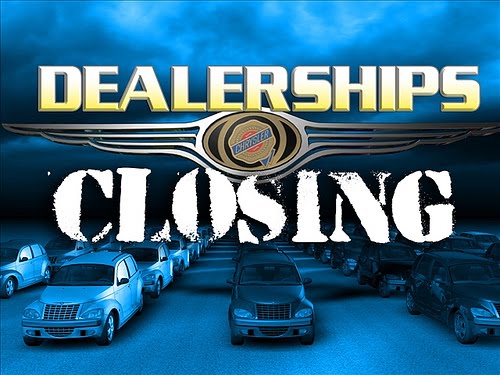September 2008 marked a chilling moment in our nation’s history. That month Wall Street goliath Lehman Brothers filed bankruptcy, ending its 158-year history in the financial industry. That same month Merrill Lynch was sold over a weekend, sending shockwaves throughout the nation that our financial market was collapsing around us.
As the Great Recession began to form, auto sales plummeted to 10.6 million in 2009, down from a high of 17.8 million just years before. Many will recall the scene of the chief executives from the Detroit 3 appearing before congress, claiming they would go dark without immediate financial assistance. Industries were beginning to topple.
Chrysler, a private company owned at the time by private equity firm Cerberus Capital Management, asked for $12.5 billion from the Troubled Asset Relief Program (TARP). In support of its request, Chrysler presented the Treasury Department with a viability plan for how it planned to use the public funds. The Treasury rejected Chrysler’s plan, claiming that it was not aggressive enough. Among other things, the Government required that Chrysler terminate a substantial portion of its dealer base.
Chrysler’s revised plan was approved by the Government, and on April 30, 2009 Chrysler filed a consolidated petition for bankruptcy in New York. The “pre-packaged” restructuring plan was approved by the Bankruptcy Court on a Sunday, just 31 days later.
Under the sale, most of the assets of Chrysler were to be purchased by a new entity in which Fiat would own 20 percent, and Chrysler ridded itself of billions in debt. The bankruptcy also enabled Chrysler to avoid its franchise agreements, and in doing so it terminated 789 of its franchised dealers.
The manner in which Chrysler – and the Government – handled the termination of the dealers was nothing short of inhumane. Knowing that many of these franchises had been vested in families for generations, the terminated dealers were given no notice that they were being terminated, and just 22 days to cease all operations once notified.
It gets worse. Because the termination process was completed through the Bankruptcy Court, Chrysler was not required, as it normally would be in the case of a termination, to take back any of the new vehicle inventory the dealers had in stock. However, because the terminated dealers were no longer Chrysler-franchised dealers, they were prohibited from selling the vehicles to the public. The only option for the dealers was to sell the vehicles to other dealers for pennies on the dollar, because they already had units on their lots that they couldn’t sell. ,.
Yet, while their franchises were taken from them, the dealers’ ordinary financial obligations of rent, mortgages, payroll, term loans and floor plans all remained intact. The net result of this was that a private company was given $12.5 billion in tax payer money, and 789 dealers lost what were in many cases life-long businesses, virtually overnight.
The Special Investigator General Audits the Process
In June 2010, the Special Investigator General for the Troubled Asset Relief Program completed its review of the Chrysler bailout, issuing a comprehensive written report. The investigation revealed that Chrysler’s viability plan was reviewed, and rejected, by a team of 15 people assembled by the Administration, called the Treasury Auto Team. Yet, none of the Auto Team leaders or personnel had any experience in the auto industry.
The Special Investigator General further found that under Chrysler’s original plan, it sought to slowly consolidate its dealers from 3,181 in 2009 to 2,000 in 2014 through its Project Genesis. The Auto Team, however, was focused on having Chrysler emulate the “Toyota” model of having fewer dealerships in metro areas, and hence it rejected Chrysler’s gradual consolidation approach. The termination of 789 dealers on 22 days’ notice was the result.
MLG Sues the U.S. for Violating the 5th Amendment
In December 2012, MLG Automotive Law filed a lawsuit against the U.S. on behalf of numerous terminated Chrysler dealers in the U.S. Court of Federal Claims in Washington D.C. The lawsuit, entitled Spitzer Motor City v. U.S., alleges that the U.S. violated the Takings Clause of the 5th Amendment, which prohibits the government from taking private property “without just compensation,” when it conditioned Chrysler’s receipt of TARP funds on Chrysler terminating 789 of its dealers. Spitzer Motor City is now consolidated with two other dealership “takings” cases in the Court of Federal Claims, consisting of 307 terminated dealers.
The Justice Department has filed motions to dismiss, as well as an interlocutory appeal to the U.S. Court of Appeal, all claiming that the complaints did not state a case. The trial court and the court of appeal have refused to dismiss the claims, repeatedly holding that while the claims do not fit neatly into a normal takings framework, they could result in liability against the U.S if proven to be true.
Deep in Discovery
The parties are now deep in discovery, with the Government having produced over 150,000 documents, consisting of millions of pages. The parties have also slotted out 60 depositions, consisting of the heads of Chrysler, as well as key players in the U.S. Treasury and the Bush and Obama Administrations. To date, Robert Nardelli (former CEO of Chrysler), Peter Grady (former director of dealer operations at Chrysler) and James Press (former vice chairman and co-president of Chrysler) have been deposed.
To facilitate an orderly administration of the trial, the Court of Federal Claims has established 10 model plaintiffs for the liability phase of the trial. If liability is established – that is, that the Government is responsible for taking the dealerships’ franchise rights by coercing Chrysler into terminating their franchises – then the actual damages sustained by each dealership will be assessed separately. Trial is tentatively scheduled for 2018.
